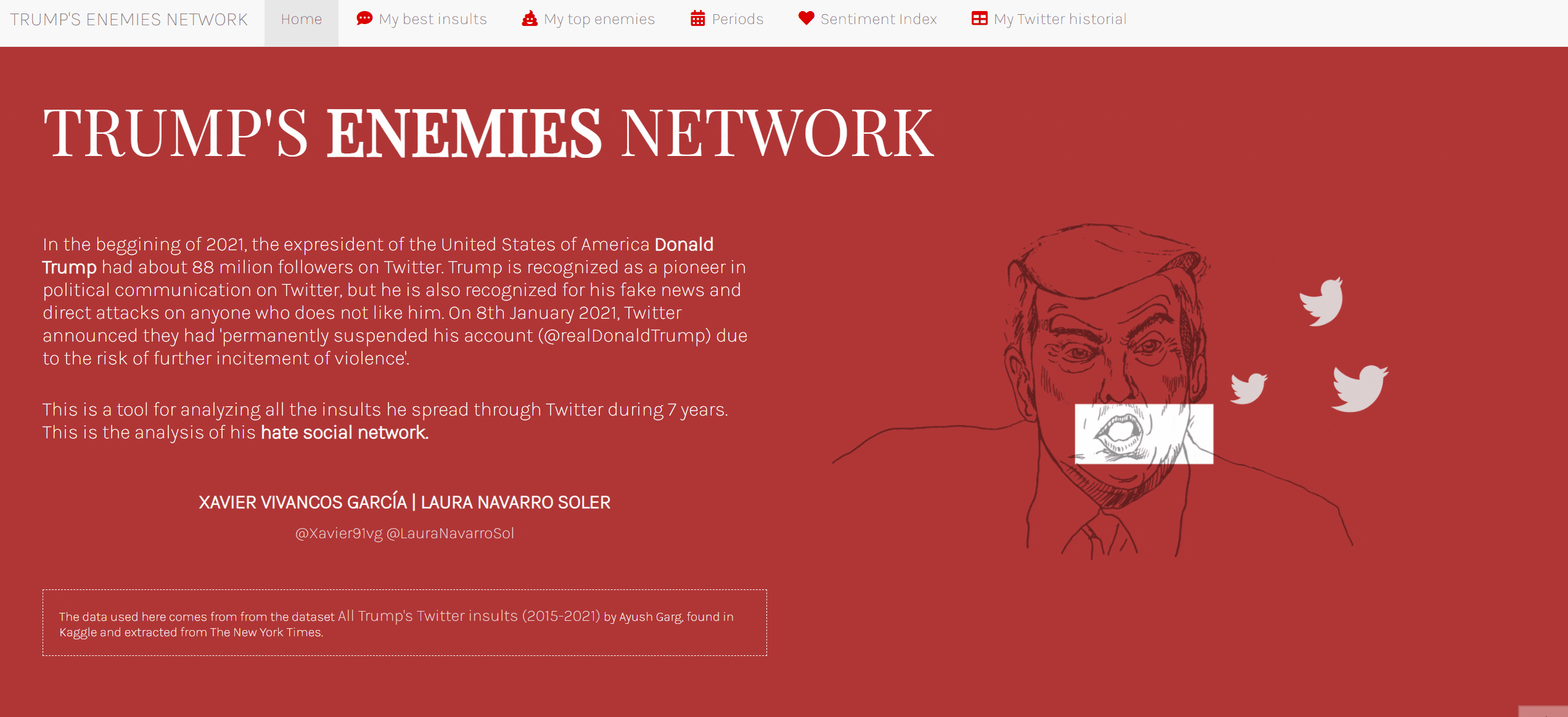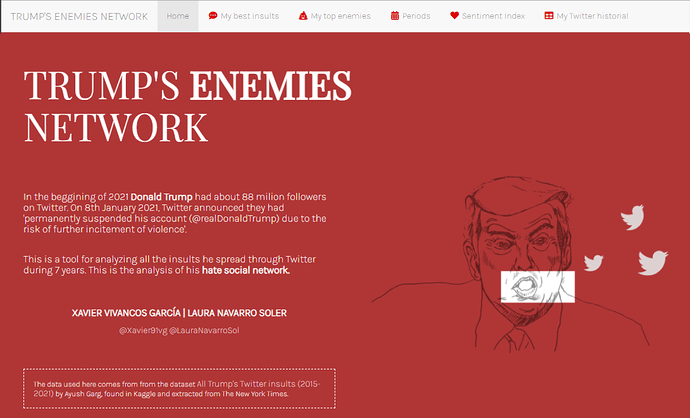Trump's Enemies Network
Authors: Laura Navarro Soler | Xavier Vivancos García
Abstract: Trump's Enemies Network is a tool for analyzing all the insults and verbal attacks that the expresident of the United States Donald Trump spread through Twitter during 7 years, from 2015 until the beginning of 2021. It is inspired by The New York Times piece, and it is funded on its data too. The purpose of this app is to explore and detect patterns and trends on his messages through his Twitter account, @realDonaldTrump. At that time, an open debate started: are his messages protected by freedom of expression? Or do we have to block them so as not to cause more polarity and hatred?
Full Description: This application is divided into six sections, which you can find in the top of the page. They are distributed as if it was the personal account of a social network. So, you can find personal titles such as "My TOP enemies" as if they were "contacts", or "Periods" as a kind of "Calendar". We want to make you feel as if you were Donald Trump, and this was a very particular social network. The six sections are the following:
-
Home or landing page, where you can find a short presentation and the authors, as well as the source of the data.
-
My best insults. Here, you can select the most used insults by Donald Trump and see when he said them, and also you can visualize the words related to the selected ones (network of bigrams). You can compare up to three words at the same time, in any specific period, and see the network within those words. Moreover, you can find a button that allows you to compare that word/insult with the entire amount of insults.
-
My top enemies. In this section you can select common enemies who Donald Trump dedicated despective tweets. Which words were most used by Donald Trump when he wrote about Hillary Clinton, The New York Times or CNN? When he said them? Give a try and select all of them, you will see some patterns!
Because unigrams (one word) most of the times are not enought to understand the message, you can select the option "bigrams". If you select it, you will see the most used two-word combinations in each case. -
Periods. In this section, you can see who Donald Trump wrote insults to during a period of time -whith political or social relevancy-. Select a period (Presidential Elections 2020, for example) for seeing which were his main 'enemies' during those months.
-
Sentiment index. Okay, there are kinds and kinds of insults. Some words are 'soft', some are 'hardcore'. In order to detect the level of hate of the words, we used a sentiment index, a tool that helps us to rate the intensity of hate. You can find a first graph that shows the sentiment index (you may notice that, in most of the cases, the index is under 0, which is not 'soft' at all.
Below you can find a second graph that categorizes the words used in the tweets dedicated to every top enemy. In other words, you can see which type of sentiment Donald Trump transmited on his tweet when he was talking about them.
You may notice that most of the 'insults', as they are called in the original dataset, aren't insults themselves; here, insults appeal to verbal attacks to someone or something. We can find, as an example, words like 'radical', 'mess' or 'crooked'. Isolated, they are not insults, but they are words with negative connotations. In the end, Donald Trump had about 88 million followers on Twitter; his words, as ours, can be double edged swords.
If you find any inconsistency in our analysis, we will appreciate if you write us! ![]()
Keywords: tidytext, sentiment-analysis, tidyverse, trump, ggraph
Shiny app: https://xavishiny.shinyapps.io/hate_speech/
Repo: GitHub - xavivg91/shiny-contest-2021: Shiny app competition
RStudio Cloud:
Thumbnail:
Full image:
Animation:


